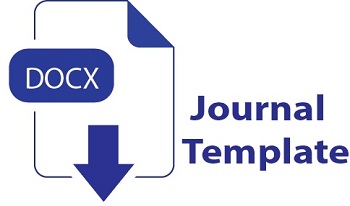EFEK PEMBERIAN P0C KULIT BAWANG MERAH PADA PERTUMBUHAN DAN PRODUKSI PAKCOY (Brassica rapa L.)
DOI:
https://doi.org/10.35457/viabel.v19i1.4372Keywords:
NPK, Organosol, Land rehabilitationAbstract
Pakcoy vegetables (Brassica rapa L.) are very popular among the public. Problems found in pakcoy cultivation are the habit of using inorganic fertilizers continuously, as well as acidic organosol soil types. To improve soil fertility and overcome the low yield of pakcoy, it is necessary to rehabilitate the land by using environmentally friendly shallot skin LOF. The main objective of this investigation to acquire the best concentration and the reaction of pakcoy vegetation to the union of NPK fertilizer and shallot skin LOF. This investigation utilized a Randomized Group Design with a treatment union of P1 100% NPK, P2 50% NPK + 15ml shallot skin LOF, P3 50% NPK + 20ml shallot skin LOF, P4 50% NPK + 25ml shallot skin LOF. The observation parameters are the number of leaves, leaf width, leaf length, plant fresh weight, and root length. The results revealed that the combined intervention of NPK fertilizer and onion skin LOF had no significant effect on the parameters of the number of leaves, leaf width, or root length. But this study had a significant effect on leaf length, and fresh weight of pakcoy plants. The optimal combination is 50% NPK combined with 20ml of shallot skin LOF. From the expected results of this study are, it is expected to be an option for farmers to reduce the use of NPK by using 20 ml of shallot skin LOF.
Downloads
References
Angela, A, A. (2019). Pengaruh Pemberian Pupuk Kandang Ayam dan Pupuk Hayati Terhadap Pertumbuhan dan Hasil Tanaman Sawi Pakcoy (Brassica rapa L.) Nauli F1.
Banu, S. L. (2020). emanfaatan limbah kulit bawang merah dan ampas kelapa sebagai pupuk organik terhadap pertumbuhan beberapa tanaman sayuran. Jurnal Ilmiah Respati, 11(12), 148–155.
Bhaskoro, A.W., Kusumarini, N. danSyekhfani. (2015). EFISIENSI PEMUPUKAN NITROGEN TANAMAN SAWIPADAINCEPTISOLMELALUI APLIKASI ZEOLIT ALAM. Jurnal Tanah Dan Sumberdaya Lahan., 2(2), 219–226. https://123dok.com/document/zpdkonrz-efisiensi-pemupukan-nitrogen-tanaman-inceptisol-melalui-aplikasi-zeolit.html
Ibnusina, F. (2024). Efek Pemberian Jakaba terhadap Pertumbuhan dan Produksi Tanaman Sawi Hijau ( Brassica juncea L .) pada Tanah Organosol. 35(2), 250–258.
Marpaung, A. E., & Hutabarat, R. C. (2015). Respons Jenis Perangsang Tumbuh Berbahan Alami dan Asal Setek Batang Terhadap Pertumbuhan Bibit Tin (Ficus carica L.) (The Response of Natural Growing Stimulant Materials and Stem Cutting Origin to the Growth of Fig Seedling). Jurnal Hortikultura, 25(1), 37–43. http://ejurnal.litbang.pertanian.go.id/index.php/jhort/article/view/3220
Nugroho, H., Sembiring, J., Kusumah, R., Yusuf, M., Anwar, A., & Endrawati, T. (2024). RESPON TANAMAN PAKCOY (Brassica rapa L.) TERHADAP PEMBERIAN SERBUK KAYU DAN PUPUK PETRORGANIK. VIABEL: Jurnal Ilmiah Ilmu-Ilmu Pertanian, 18(1), 29–39. https://doi.org/10.35457/viabel.v18i1.3539
Palupi Puspitorini, G. I. (2019). Dasar-dasar ilmu tanah. Sijunjung: Mitra Cendekia Media.
Putra, wahyudi Y., Ibnusina, F., & Alfikri. (2023). Application of Plant Growth Promoting Rhizobacteria (PGPR) Dosage on Growth and Production of Lettuce (Lactuca sativa L.). Agrosains : Jurnal Penelitian Agronomi, 25(1), 9–12. https://jurnal.uns.ac.id/agrosains/article/view/62987DOI:http://dx.doi.org/10.20961/agsjpa.v25i1.62987
Putri, Y, D, A., Surti, K., & M. (2021). fektivitas Kulit Bawang Merah (Allium ascalonicum) Terhadap Pertumbuhan Pakcoy (Brassica rapa L.). Jurnal Ilmiah Ilmu Dasar Dan Lingkungan Hidup, 21(2), 44–53.
Rejeki, Safitri, D. S., & Fahamsya, A. (2023). Pengaruh Proses Pengukusan Sawi Pakcoy (Brassica Chinensis L.) Terhadap Kadar Vitamin C Menggunakan Metode Iodimetri dan Spektrofotometri UV-Vis. Jurnal Ilmiah Biosaintropis (Bioscience-Tropic), 9(1), 105–117. https://doi.org/10.33474/e-jbst.v9i1.545
Sarido, L., & Junia. (2017). Uji Pertumbuhan dan Hasil https://www.adenomyosisadviceassociation.org/hysterectomy Tanaman Pakcoy (Brassica rapa L.) dengan Pemberian Pupuk Organik Cair pada Sistem Hidroponik. J. Agrifor, 16(1), 65–74.
Downloads
Published
Issue
Section
License
Copyright (c) 2025 VIABEL: Jurnal Ilmiah Ilmu-Ilmu Pertanian

This work is licensed under a Creative Commons Attribution-ShareAlike 4.0 International License.
Authors who publish with this journal agree to the following terms:
- Copyright on any article is retained by the author(s).
- The author grants the journal, right of first publication with the work simultaneously licensed under a Creative Commons Attribution License that allows others to share the work with an acknowledgment of the work’s authorship and initial publication in this journal.
- Authors are able to enter into separate, additional contractual arrangements for the non-exclusive distribution of the journal’s published version of the work (e.g., post it to an institutional repository or publish it in a book), with an acknowledgment of its initial publication in this journal.
- Authors are permitted and encouraged to post their work online (e.g., in institutional repositories or on their website) prior to and during the submission process, as it can lead to productive exchanges, as well as earlier and greater citation of published work.
- The article and any associated published material is distributed under the Creative Commons Attribution-ShareAlike 4.0 International License









.png)




